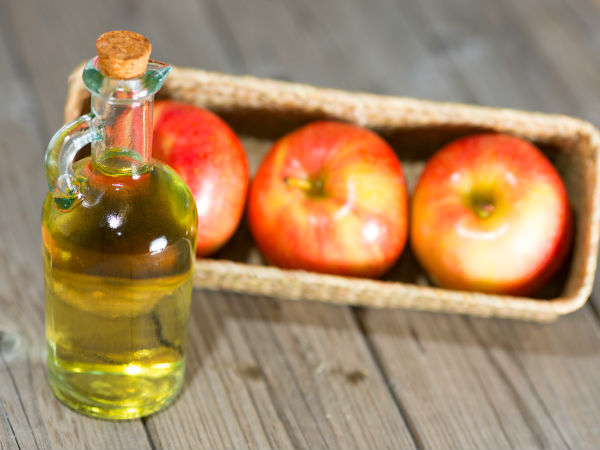
1. Apple Cider Vinegar
Apple cider vinegar (ACV) has antimicrobial properties that help treat many types of infections. Applying ACV prevents the further growth of microbes such as Candida, bacteria, moulds and other infectious agents. It also reduces itching and irritation of the skin. [1]
How to use: Mix equal proportion of ACV and water. Apply on the affected skin with a cotton ball and allow to dry. Wash later with water.
 11 Safe And Effective Home Remedies To Remove Earwax And Treat Earache
11 Safe And Effective Home Remedies To Remove Earwax And Treat Earache
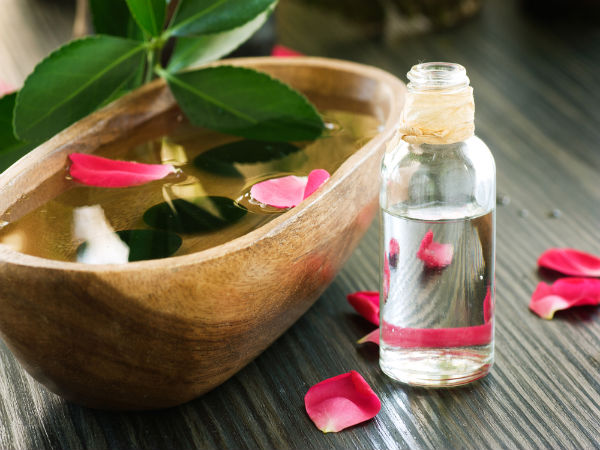
2. Rosewater
Rosewater is an astringent which has several therapeutic properties apart from being used as a perfuming agent. It may help reduce the inflammation of the skin caused due to infectious agents as well as heal the wound at a faster rate. Vapour therapy with rose oil may also help reduce itching, redness and irritation. [2]
How to use: Apply a few drops of rose water in the affected skin area directly or after mixing it with natural oils.Repeat the process at least twice a day.

3. Tea Tree Oil
Tea tree oil (TTO) is a potential antimicrobial agent often used in dermatology. It helps reduce Candida infections; a common fungus responsible for intertrigo. When applied topically, TTO may provide relief against irritation, itching, redness and contribute to wound healing. [3]
How to use: Mix TTO with a carrier oil such as coconut/almond oil and apply on the affected area. Repeat the process 2-3 times a day. Avoid using TTO directly on the skin.
 11 Must-Have Healthy Vegetables During The Monsoon
11 Must-Have Healthy Vegetables During The Monsoon
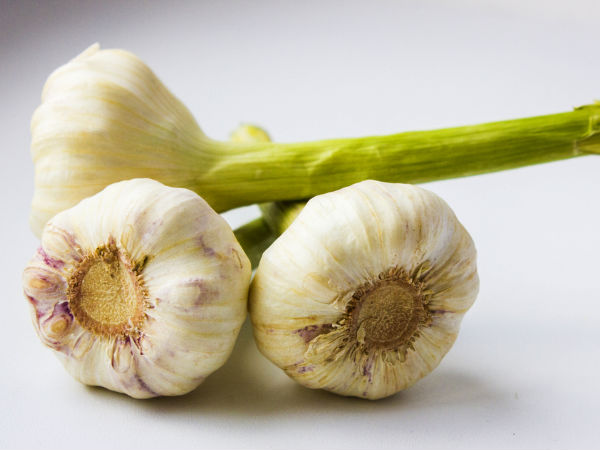
4. Garlic
Garlic is the dermatological solution for many types of skin problems. Its topical use may inhibit the progression of Candida (fungus) and other infectious agents responsible for intertrigo. Intertrigo treatment at home could be easily carried out by using garlic, which is also available at a low-cost. [4]
How to use: Mince two cloves of garlic. Mix it with a tablespoon of water and apply on the affected area. Leave the mixture for 5-10 minutes and wash.
 How To Get Rid Of A Stye: Safe And Effective Home Remedies
How To Get Rid Of A Stye: Safe And Effective Home Remedies

5. Lemon
Intertrigo home remedies include lemon as it is easily available home remedy that may help treat intertrigo symptoms such as rashes, itching and irritation. The vitamin C in lemon is a natural antibiotic that may kill the bacteria responsible for the condition. [5]
How to use: Lemon juice is applied topically for treating intertrigo. Apply a few drops of lemon juice in the affected area at least 2-3 times a day.
 15 Effective Home Remedies To Treat Or Prevent Hay Fever Symptoms
15 Effective Home Remedies To Treat Or Prevent Hay Fever Symptoms

6. Cold Compress
Intertrigo is mainly prompted by warm temperature as it causes increased sweating in the skin folds, resulting in itching and skin irritation. Cold compress prevents the excessive production of sweat, hence decreasing the moisture and reducing itching. [6]
How to use: Rub ice cubes on the affected area or dip a cloth in cold water and apply.
READ RELATED: Vegetarian women are a THIRD more likely to suffer hip fractures

7. Coconut Oil
Coconut oil has anti-inflammatory and skin protective properties. It reduces itching that leads to skin irritation and infection. Coconut oil may reduce inflammatory triggers caused due to infections and treats intertrigo. [7]
How to use: Apply coconut oil on the affected area and leave it overnight.
 Folliculitis: Simple And Effective Home Remedies
Folliculitis: Simple And Effective Home Remedies
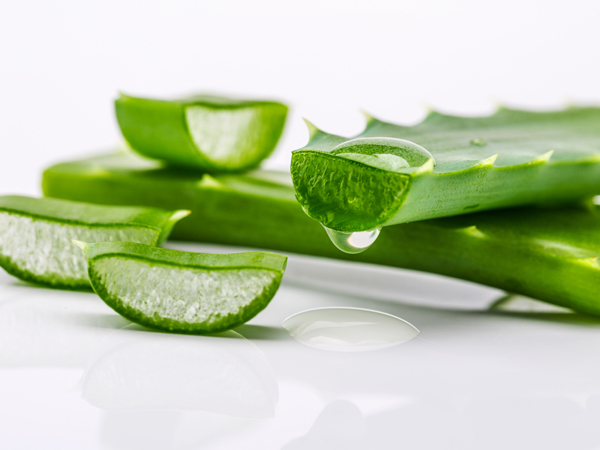
8. Aloe Vera
Aloe vera is a natural product which is highly used to treat various skin-related disorders. The eight enzymes in aloe vera along with other vitamins and minerals may help reduce skin inflammation that leads to itching and irritation. [8] This is why, aloe vera is considered one among the best natural remedies for intertrigo.
How to use: Aloe vera gel can be directly applied on the skin or after mixing with a carrier oil. Apply it 2-3 times a day.

9. Turmeric
Curcumin, the main curcuminoid in turmeric has several dermatological benefits. It is a well-tolerated, low-cost and potential herb that targets infectious agents responsible for skin disorders. Turmeric may help reduce inflammatory symptoms that cause intertrigo as well as kill microbes responsible for the condition. [9]
How to use: Make a paste by mixing one-fourth teaspoon of turmeric with a teaspoon of water and apply on the affected area. Let it dry and wash with water.
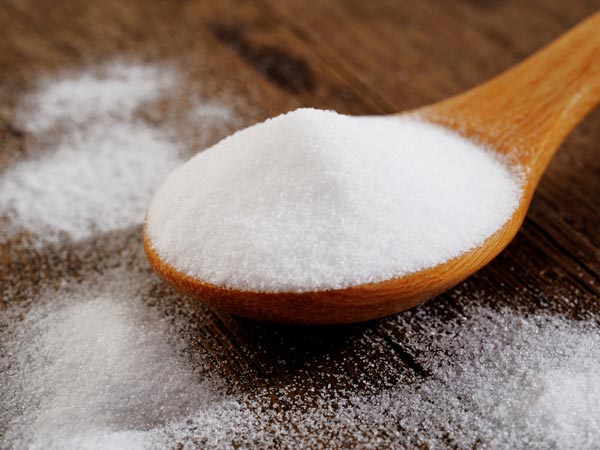
10. Baking Soda
Baking soda helps balance the pH levels of the skin and reduces itching and irritation. Its antimicrobial activity may help kill microbes responsible for causing intertrigo. Baking soda also helps reduce redness of the skin. [10]
How to use: Make a thick paste by mixing a teaspoon of baking soda with warm water. Apply on the affected area and let it dry. Then, wash with water.

11. Cucumber
The astringent property of cucumber provides a soothing effect against itching and skin irritation. Cucumber is a natural cleansing agent that may help remove microbial toxins responsible for intertrigo infections. It also helps reduce swelling of the skin. [11]
How to use: Cut a cucumber into slices and gently rub or apply on the affected area.

Common FAQs
1. How do you stop intertrigo?
Home remedies are best to stop intertrigo. These remedies include applying apple cider vinegar, rose water, coconut oil and cold compress on the skin. They help reduce itching, irritation, rashes, redness and infections, all symptoms of intertrigo.
2. What does intertrigo smell like?
Mild intertrigo symptoms start with itching and burning sensation. But, when the skin gets infected with bacteria or fungus and becomes inflamed and red, a foul smell is produced.
Source: boldsky blog



 25 Food To Eat When You Have Food Poisoning
25 Food To Eat When You Have Food Poisoning Monsoon Has Arrived: 11 Healthy Fruits To Get Indulged In
Monsoon Has Arrived: 11 Healthy Fruits To Get Indulged In





